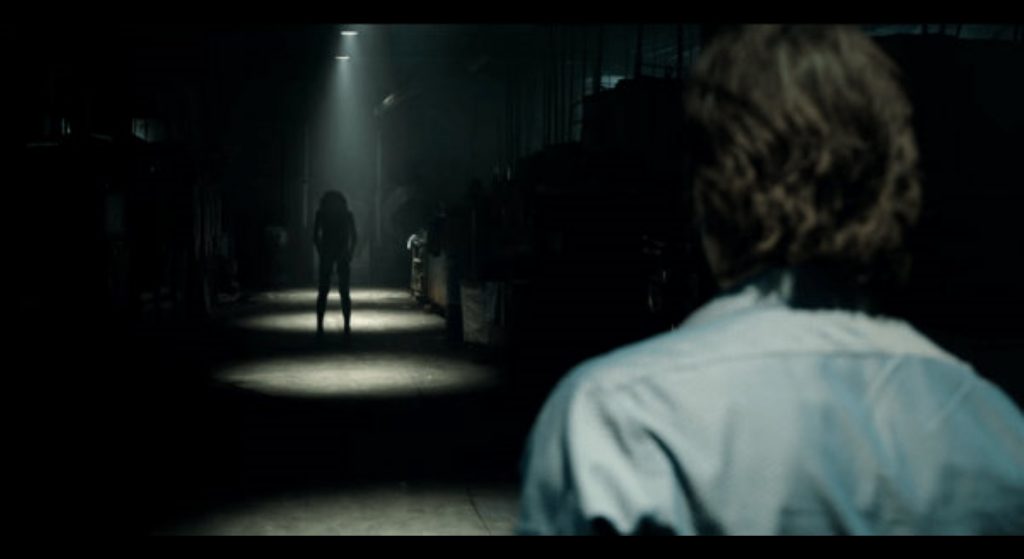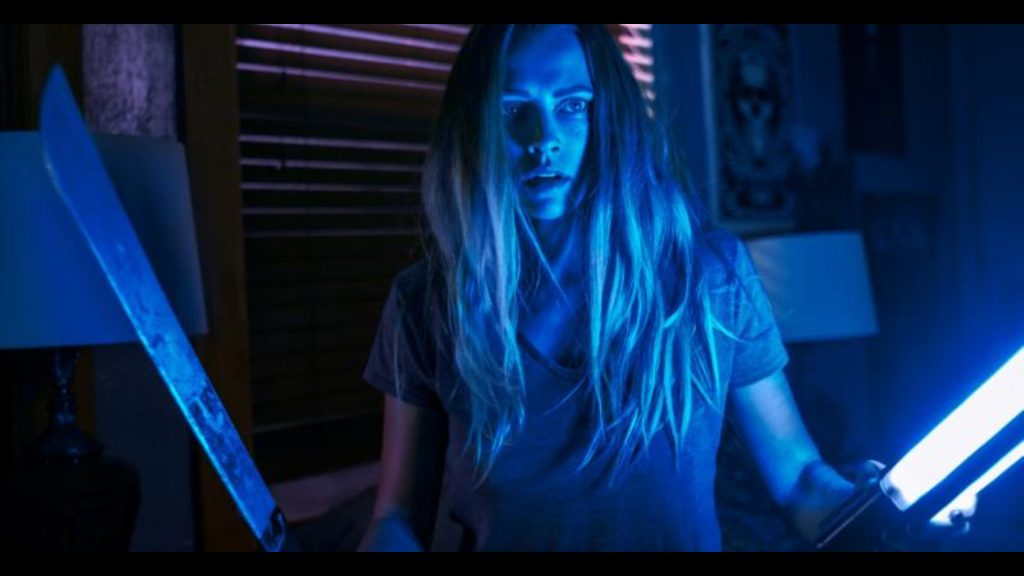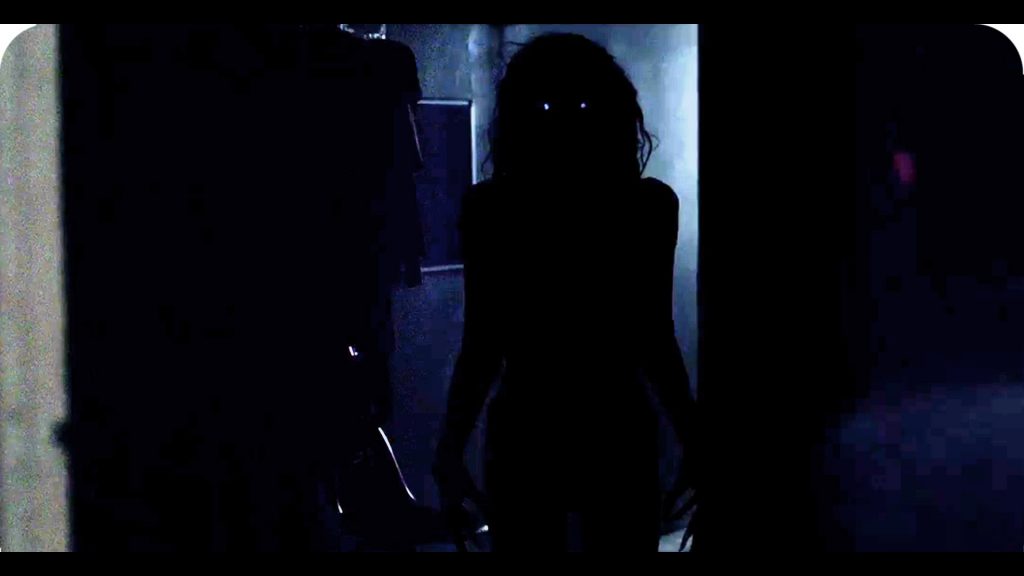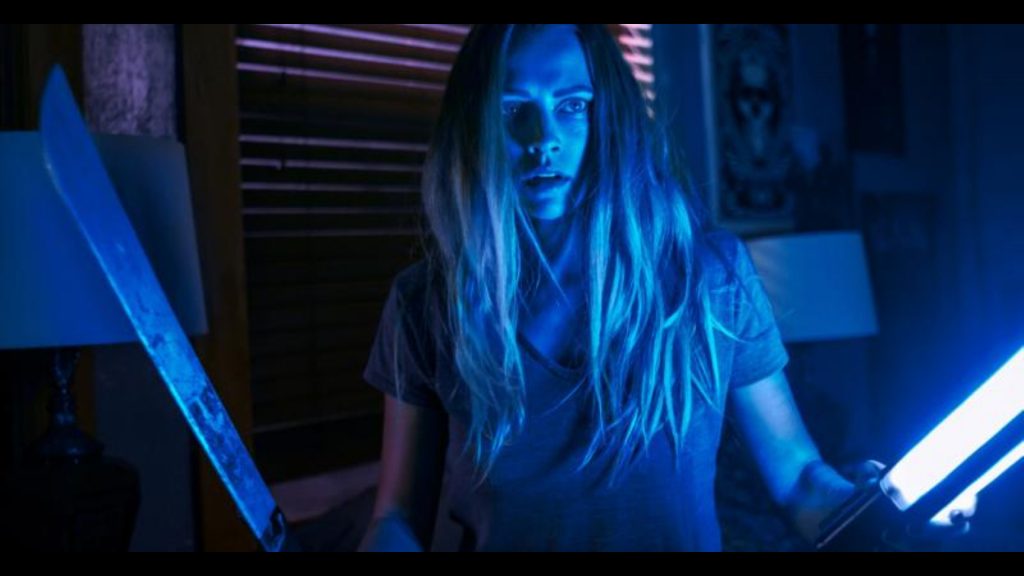Lights Out is a supernatural horror film directed by David F. Sandberg and written by Eric Heisserer. The film received positive reviews from critics after its release in 2016, and was a great commercial success, considering its relatively small budget. It went on to win the NSW & ACT Silver Award at the Australian Cinematographers Society and received nominations for Best Actress for Teresa Palmet and Best Supporting Actress for Maria Bello at the BloodGuts UK Horror Awards in 2016.
The film stars Teresa Palmer as Rebecca, Maria Bello as Sophie, Gabriel Bateman as Martin, Alexander DiPersia as Bret, Billy Burke as Paul, and Alicia Vela-Bailey as Diana. The film follows the troubled Rebecca as she reunites with members of her distant family, and uncovers a terrible secret concerning her own childhood, and her mother’s past.

As the film starts, we find out very quickly why the film’s title is Lights Out. Late at night, in a warehouse filled with mannequins, a worker notices something unusual. When she turns the lights off, she sees something, someone, standing in the distance. As soon as she turns them back on, the thing disappears. She fiddles with the lights until she realizes it’s moving and begins to frantically run away from it. Things take a gruesome turn in what is probably the perfect setup for what’s ahead. Not only do we get the sense that the creature’s intent on avoiding light, but we also find out that it’s very deadly, making every upcoming encounter with it all that more intense.
After the intensity of this sequence, the film starts taking things more slowly, adding an element of mystery to the creature and slowly building anticipation. Martin, a young boy, hears his mother talk to someone in the dark. And there isn’t supposed to be anyone in the house. As he goes back to his room, he sees an eerie darkness cover the doorframe, and what looks like a hand, grasping outwardly from the room. And as he hides under his covers, he hears something try to come into the room, wildly wiggling the door handle.

Martin, understandably, can’t get any sleep. When he falls asleep repeatedly at school, Rebecca, Martin’s sister, is called to pick him up. For some reason, his mother can’t be reached. Rebecca hasn’t lived with her family for a while. She hasn’t even seen them, mostly because of deep-seated childhood trauma. As she’s taking Martin back to their mother’s house, she finds out something that sends her into visible shock. Martin tells her that their mother has been talking to someone called Diana. As it turns out, this is precisely the cause of Rebecca’s childhood stresses, as she used to be deathly afraid of a monster living in their house, which her mother called Diana. Having grown up, she now thinks that her memories of seeing the creature were all a by-product of her overactive imagination and her mother’s mental illness, but things aren’t quite so simple.
For the rest of the film, Rebecca’s conviction that Diana isn’t real is shaken, and she goes on a perilous journey to discover the truth about who Diana is and how she’s connected to her family. What’s most remarkable about this film is that it absolutely draws you in. Even if you think that its explanations for Diana are troubled with plot holes and just a bit too vague, the film’s wonderful soundtrack and incredible acting more than make up for its faults.
First of all, I can easily say that Diana is one of the scariest horror movie monsters I have ever seen. The unearthly way in which she moves, always appearing from just around the corner, always near, sends chills down my spine. And her appearance, which is very much humanlike, is truly terrifying, far more so than a wholly inhuman monster could ever be. There is something about her eerie similarity to the human, the familiar, that makes her gaunt figure haunting.

Another aspect of this movie that makes it really stand out is its brilliant use of cinematic effects to display Diana’s inability to manifest in light. When she grabs onto something, or someone, and lights appears, anything she was holding drops to the ground dramatically. It makes the movie’s action scenes shine, and it gives characters an opportunity to escape, or prepare for another encounter with the creature. Instead of making up a silly reason for a character to survive, diminishing the feeling of relief after the encounter, Diana’s weakness to light is well-established and makes successful escapes believable. And even more than that, it makes the absence of light frightening in itself.
Lights Out is one of the few horror movies that I really enjoy watching, even sometimes returning to it to give it another watch. One of the reasons why I find is easy to watch again after some time is that its plot isn’t central to the experience. Even if you know what’s going to happen, it’s immensely entertaining to re-experience all of the scenes Diana’s in. This movie never fails to creep me out, and just has the perfect ratio of buildup to jump-scares. If you’re looking for a scary movie to watch in the dark, I can’t recommend this movie enough. If you’re anything like me, you’ll be looking over your shoulder in no time. If you’re easily frightened but also kind of like horror movies, watch it with a friend, and maybe turn on some lights. As long as there isn’t a sudden power outage, you should make it out just fine.
If you think you may have missed something, please click on the button below to find out all about your favorite movie or series.

